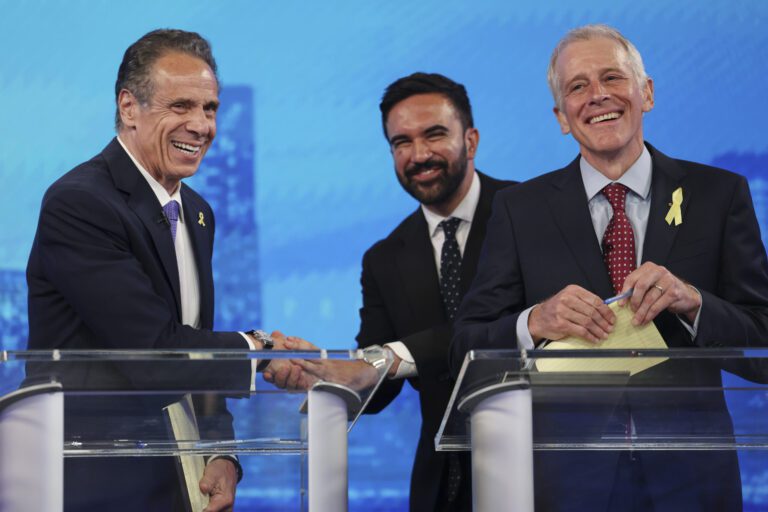Could a Socialist Candidate Claim Gracie Mansion? Election Day Predictions Heat Up
As New York City gears up for the Democratic mayoral primary this Tuesday, a recent poll suggests that state assemblyman Zohran Mamdani, a Democratic Socialist, may be on the verge of a historic victory over former Governor Andrew Cuomo. This election could be transformative in the city’s political landscape.
Poll Predictions: A Last-Minute Surge
The latest Emerson College poll indicates Mamdani is poised to defeat Cuomo in the critical eighth round of ranked-choice voting, commanding 51.8% of the vote compared to Cuomo’s 48.2%. This marks a significant milestone as it is the first nonpartisan survey to show Mamdani leading in the Democratic primary.
Key Details About the Election
- Early Voting: Early voting commenced over a week ago, with Election Day slated for this Tuesday.
- High Temperatures: AccuWeather forecasts temperatures hitting 99 degrees, feeling like 106 degrees, potentially impacting voter turnout, especially among older demographics who tend to lean toward Cuomo.
- Voter Turnout: Over 380,000 Democrats in New York City have already cast their ballots, predominantly from Brooklyn and Manhattan, with a ratio of more than 2-to-1 over votes from other boroughs.
Mamdani’s campaign emphasizes support among younger, college-educated voters in urban areas:
- Demographics: His base is largely composed of white and Asian voters under 50 years of age.
- Promised Initiatives: Mamdani has pledged initiatives including free public transportation, a rent freeze on stabilized apartments, and establishing city-owned grocery stores.
A Shift in Voter Sentiment
The electoral landscape appears to be shifting dramatically. Spencer Kimball, executive director of Emerson College Polling, noted that:
"Over five months, Mamdani’s support has surged from 1% to 32%, while Cuomo remains static."
Mamdani’s rise illustrates a growing appeal for progressive policies, particularly among younger voters, which could be pivotal in the ranked-choice voting system.
Understanding Ranked-Choice Voting
New York City’s ranked-choice voting system allows voters to rank up to five candidates. Here’s how it works:
- The candidate with the fewest first-choice votes is eliminated.
- Votes cast for that candidate are redistributed according to the second choice indicated on those ballots.
- This continues until a candidate surpasses 50% of the votes.
Mamdani’s potential victory hinges on strategic cross-endorsements, particularly with fellow candidate Brad Lander, who recently urged supporters to rank Mamdani as their second choice. The progressive bloc in the election has been encouraging voters to avoid Cuomo in their rankings.
Cuomo’s Challenges and Support Base
While Governor Cuomo leads in early rounds of voting, he faces significant challenges:
- He performs best in the Bronx and Queens/Staten Island.
- A recent Marist poll highlights Cuomo’s stronger support among moderates, Black voters, and those over 50 years of age.
Critical Voter Support
Emerson’s findings reveal a stark divide:
- 24-point lead for Cuomo among Black voters.
- 26-point lead among individuals in their 50s.
- 12-point lead with seniors over 60.
Final Remarks from Candidates
Both candidates have rallied their supporters as Election Day approaches:
- Cuomo emphasized a need for voter turnout, stating, “Together we will win."
- In contrast, Mamdani remarked, “On the day before the election, we stand on the verge of toppling a political dynasty.”
With the election only hours away, the combination of a fervent voter base and a rising tide in support for progressive candidates could reshape the future of New York City’s leadership.
Explore more on the implications of the ranked-choice voting system and how it could alter the political landscape in your area.


